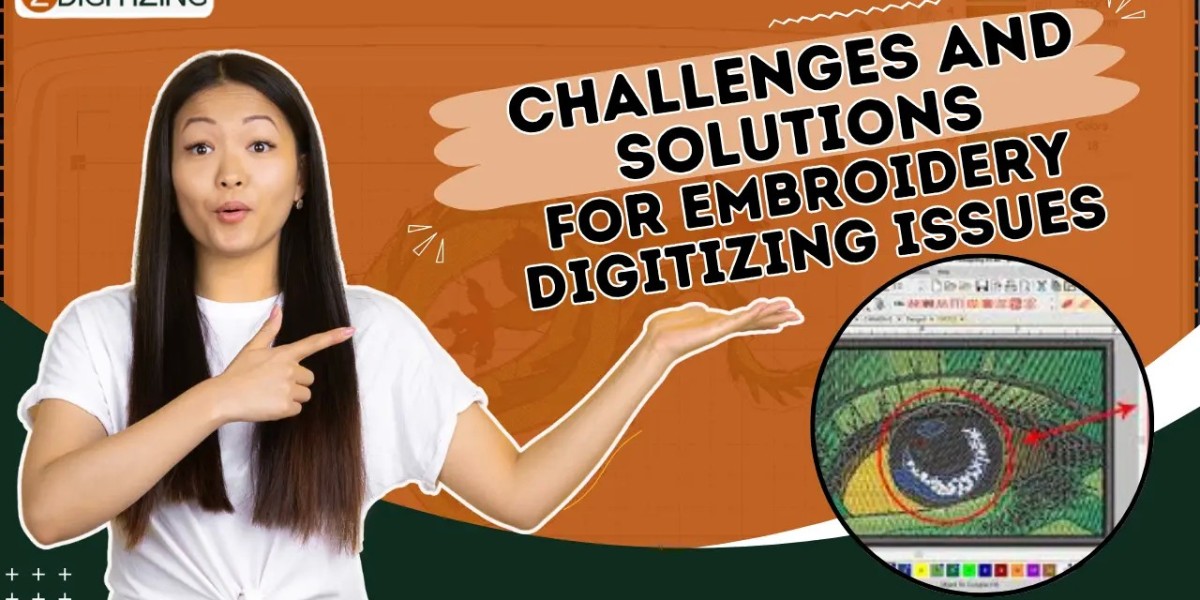Embroidery digitizing, the process of converting artwork into a digital format for embroidery machines, is a critical step in achieving impeccable embroidered designs. However, this intricate process comes with its set of challenges. In this comprehensive guide, we explore common embroidery digitizing issues and provide practical solutions to ensure a seamless transition from design to embroidery.
Understanding Common Embroidery Digitizing Challenges
1. Complexity of Designs
Challenge: Elaborate and intricate designs with fine details can pose challenges in digitizing, especially when translating these details into stitches.
Solution: Simplify the design without compromising its essence. Focus on key elements and details that are essential for the overall look. Adjust stitch density and use underlay stitches strategically to maintain clarity.
2. Small Text and Lettering
Challenge: Embroidering small text or intricate lettering can lead to illegible results, with letters blending together or becoming distorted.
Solution: Enlarge the text or simplify the font. Use a legible, sans-serif font for small text. Adjusting the stitch density and ensuring proper spacing between letters can improve readability.
3. Distortion on Curved Surfaces
Challenge: Distortion can occur when embroidering on curved surfaces, such as caps or sleeves, leading to misalignment and uneven stitching.
Solution: Implementing proper underlay stitches and using the correct hooping technique are crucial. Experiment with the angle of the design to minimize distortion on curved surfaces.
4. Thread Breakage and Tension Issues
Challenge: Thread breakage and tension issues can result in uneven stitching, loops, or gaps in the digitizing services.
Solution: Check and adjust the machine tension regularly. Ensure that the needle and thread are compatible with the fabric and design. Proper maintenance, including regular lubrication, can also prevent thread breakage.
5. Color Changes and Transitions
Challenge: Achieving smooth color transitions, especially in gradient designs, can be challenging and may result in abrupt changes.
Solution: Plan color changes strategically. Gradual transitions can be achieved by overlapping colors slightly. Utilize the color blending feature in embroidery software for a smoother gradient effect.
6. Fabric Selection
Challenge: Different fabrics require specific digitizing approaches, and designs that work well on one fabric may not translate effectively to another.
Solution: Familiarize yourself with the characteristics of different fabrics. Adjust stitch density, underlay, and pull compensation based on the fabric's texture, thickness, and stretchiness.
7. Complexity of Embroidery Machine
Challenge: Some embroidery machines have limitations in terms of the number of colors, stitch count, or hoop size they can handle.
Solution: Familiarize yourself with your embroidery machine's specifications. Adjust the design accordingly, keeping it within the machine's capabilities. Consider breaking down large designs into smaller sections if needed.
Practical Solutions to Embroidery Digitizing Challenges
8. Invest in Quality Digitizing Software
Investing in professional-grade digitizing software can significantly enhance your ability to overcome challenges. These tools offer advanced features, precise control over stitch settings, and the ability to visualize designs in detail before embroidery.
9. Regular Training and Skill Development
Embroidery digitizing is a skill that improves with practice and continuous learning. Attend workshops, online courses, or seek mentorship to stay updated on the latest techniques, tools, and trends in digitizing.
10. Create a Digitizing Checklist
Develop a systematic approach by creating a digitizing checklist that covers key considerations such as stitch density, underlay stitches, color changes, and fabric compatibility. This checklist can serve as a quick reference during the digitizing process.
11. Test on Scrap Fabric
Before embarking on the final embroidery, test your digitized design on scrap fabric with similar characteristics. This allows you to identify potential issues, make adjustments, and ensure that the final result meets your expectations.
12. Consult with Peers and Experts
Engage with the embroidery community, both online and offline. Seek advice from experienced digitizers, participate in forums, and share your challenges. Learning from others' experiences can provide valuable insights and solutions.
13. Embrace the Iterative Process
Recognize that perfection often requires multiple iterations. Don't hesitate to refine and adjust your digitized designs based on feedback, testing, and real-world embroidery results. Embracing the iterative process is key to continuous improvement.
14. Keep Abreast of Technology
Stay informed about advancements in embroidery digitizing technology. New tools and features are constantly being developed to simplify the digitizing process and address common challenges. Regularly update your software and explore new functionalities.
Conclusion: Mastering the Craft of Embroidery Digitizing
Embroidery digitizing is an art that demands precision, creativity, and problem-solving skills. By understanding common challenges and implementing practical solutions, you can navigate the intricacies of digitizing with confidence. Whether you're tackling complex designs, addressing machine-related issues, or fine-tuning for different fabrics, the key lies in continuous learning and adaptation.
Mastering the craft of embroidery digitizing opens up a world of creative possibilities. With every challenge overcome, you refine your skills, elevate your craftsmanship, and contribute to the seamless fusion of art and technology in the realm of embroidery.
Zdigitizing
ZDigitizing is offering a wide range of digitizing solutions to meet the needs of embroidery businesses and individuals alike. With expertise in logo digitizing, 3D puff digitizing, cap digitizing, and applique digitizing, zdigitizing ensures high-quality and precise embroidery designs.
Their team of skilled embroidery digitizer is well-versed in converting images to embroidery digitizing, making it easy to transform your logos, artwork, or designs into stitch files. Whether you have a PNG or JPG image, ZDigitizing can seamlessly convert it into embroidery-ready files, ensuring accurate reproduction of intricate details and vibrant colors.
ZDigitizing prides itself on delivering quick turnaround times without compromising on quality. They employ state-of-the-art software and machinery to create flawless embroidery designs that bring your vision to life. Their commitment to customer satisfaction, attention to detail, and competitive pricing sets them apart in the digitizing embroidery service industry.








